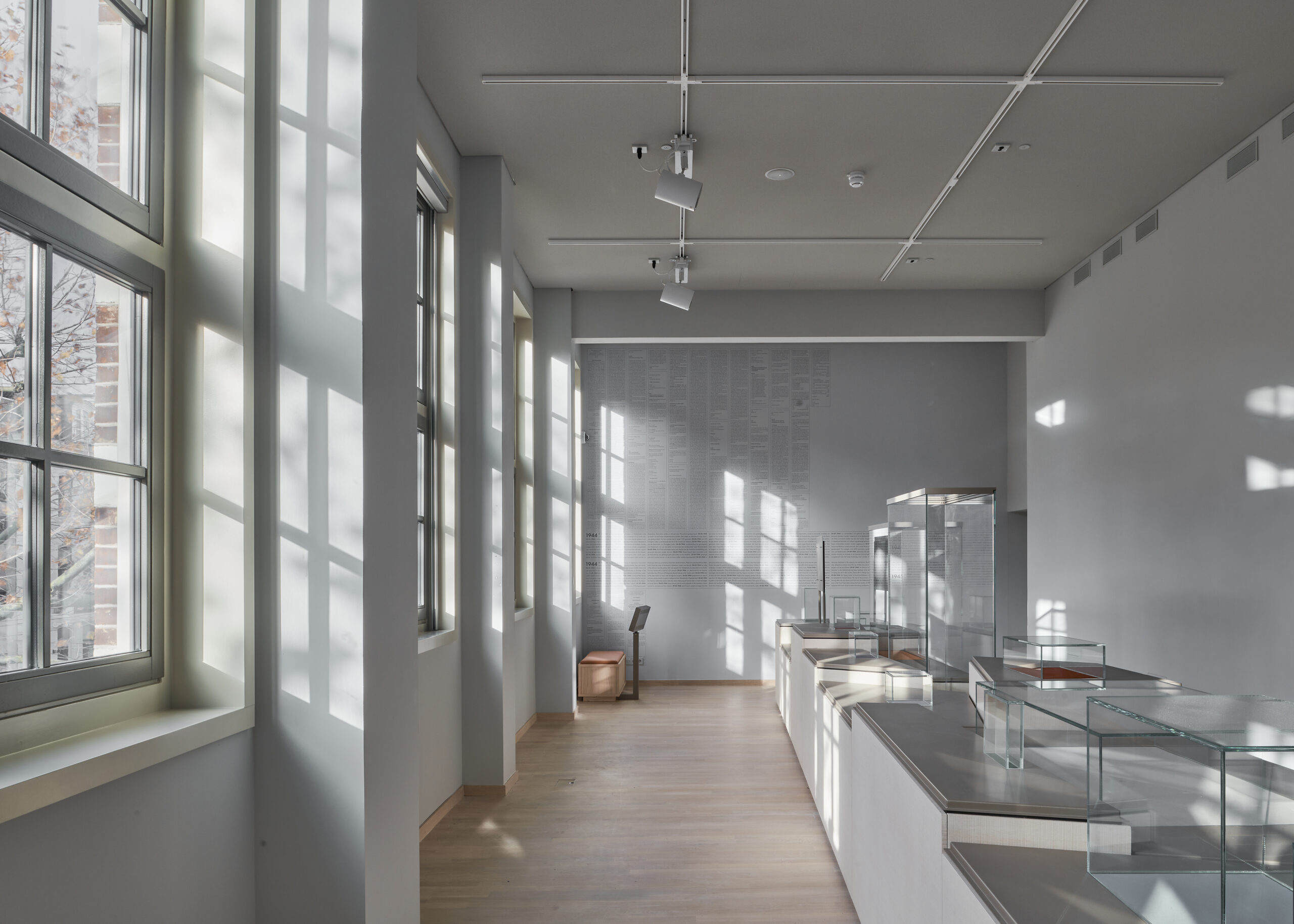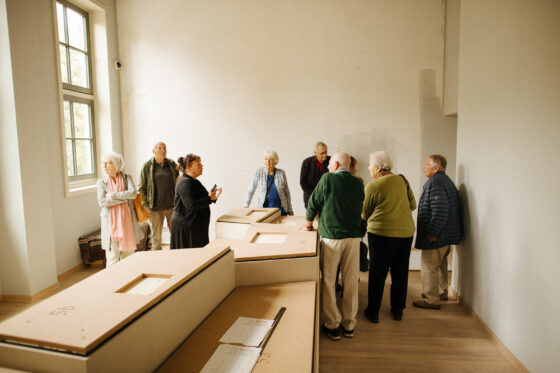The whole story: National Holocaust Museum and memorial to open
Senay Boztas
In the garden of the new National Holocaust Museum in Amsterdam are four little saplings.
These trees were planted by Holocaust survivors and their grandchildren, people with an extraordinary story. They were part of a group of 600 Jewish children who were smuggled into hiding from this former crèche during the Nazi occupation, saved by the Dutch resistance.
On the other side of the street is the Hollandsche Schouwburg theatre, a place used by the Nazis as a collection point for their parents and schoolfriends, 46,000 people, held there, transported on to camps and murdered. Now, both of these sites have been made into a museum and place of memorial to represent both sides of the Dutch war experience.
It was not just a story of bravery, resistance and survival, as the Dutch told themselves after the war. It was also a story of collaboration and looking away while three-quarters of the Dutch Jewish population was murdered by the Nazis. Profiting from their export and delivery were “Jew hunters”, paid a bounty for betraying Jewish people, the NS train service and – we now know – Amsterdam’s municipal trams.
The Holocaust Museum and Hollandsche Schouwburg memorial open this weekend to tell these stories by looking at personal relics of these lives and this time, and inviting the visitor to ask questions about blame, shame and what anti-Semitism and exclusion of “other” groups means today.
The opening has been overshadowed by protests about the presence of Israeli president Yitzhak Herzog – who according to the museum “represents the homeland of the many Dutch Holocaust survivors who emigrated to Israel after World War II to build a new future”. But this should not be a distraction from an attempt to tell a fuller truth about the Dutch war experience.
Buttons
“It happened, therefore it can happen again; this is the essence of what we have to say,” reads a quote from Jewish-Italian author Primo Levi on the wall of the Hollandsche Schouwburg memorial. This quote is central to the stories these significant places are trying to tell, stories about people’s lives, represented by objects as small as the buttons of the clothes they took off before being gassed to death.
Annemiek Gringoud, head curator, said that personal tales were key in recounting a “gruesome history” of mass murder. “This central quote from Levi warns us about the danger of repeating this human history,” she told a press opening this week. “And that brings me to the second question…what is it in a person that can make them into such a perpetrator? What happens in the head of a perpetrator that he does not see the person opposite him, the Jewish person, as a person but as something that he will destroy…? Is this something in me, in all of us, that will manifest in certain circumstances?”
This is a key question for historians such as emeritus professor and war expert Johannes Houwink ten Cate, who notes that the museum took a long time coming. He says more stories about Dutch collaboration will emerge in an Institute for War Documentation study next year. “We have seen ourselves as a nation of tolerance and resistance,” he explains.
“We did not want to see ourselves as a nation involved in collaboration with the Nazis… But: the Nazis and their helpers were not inhuman, as Yehuda Bauer famously said: ‘The most horrible thing…is that they were indeed human, just as human as you and I are.’ To believe that the Nazis were different, and that we therefore can sleep with a clear conscience, because the Nazis were devils and we are not, is ‘cheap escapism’.”

Forget-me-nots
The museum does not shy away from a shocking image of a child walking by a row of dead bodies after British soldiers liberated Bergen-Belsen, taken by war photographer George Rodger. One room is wallpapered with rules and regulations metres high, on every wall, imposed as the Nazis utterly smashed the Dutch state, taking away the rights of Jewish people. But it also contains “forget-me-nots”, stories of 19 individual lives of Holocaust victims.
It is a “decisive” point in the way Dutch culture remembers the war, according to Bart Wallen, professor of Jewish history at the University of Amsterdam. “This marks the transition of commemorations and telling the stories of the Holocaust by the survivors themselves to a museum that is more or less taking over the role,” he said.
“Even in the beginning, in the 1950s and 60s, a lot of [Jewish people] said: ‘We don’t want to go to the places where it all happened, like the Hollandse Schouwburg or Westerbork camp [where many were held before being transported to Nazi death camps] because the war is always with us. And we remember it every day of our lives.’
“People started talking about it, especially from the 1980s at schools and in families and sharing on television on the 4th of May [commemorations]. But this generation is now passing away. So it’s an important moment.”
Carpet
Salo Muller was one of the children smuggled at the age of three through the kindergarten, who later won group compensation from the NS for profiting from the death transports of his relatives. His story is one of those told on the other side of the street in the Hollandse Schouwburg, a large space for contemplation surrounded by a series of “raindrops”, with pictures and stories. He points out that how Jewish people were received back after the war is also part of the story.
“After the war, the Jewish people who came back [from the camps] had nothing, no money, no house, no family,” he said. “It took a very long time for the people to settle again, and a museum wasn’t even thought about. It is far too late, but I am happy that it is here now.”
The story of Maud Hedeman is typical of those who survived. Her family managed to escape a German camp through a prisoner exchange with Switzerland but, on her return, she told Libelle she felt “absolutely no empathy” from her fellow countrymen. One neighbour turned out to have the family carpet in their entrance hall and was unwilling to give it back. She lived her life and after she retired, volunteered to help some 3,000 foreign students, many of whom were at her funeral. And now the museum is there to tell other stories, stories like hers.
It is time, says Holocaust Museum general director Emile Schrijver to “look at the complete picture of the history of the Jewish persecution and the Holocaust in the Netherlands. And to give this huge national event, in its enormous international context, a place in the collective memory.”
Thank you for donating to DutchNews.nl.
We could not provide the Dutch News service, and keep it free of charge, without the generous support of our readers. Your donations allow us to report on issues you tell us matter, and provide you with a summary of the most important Dutch news each day.
Make a donation